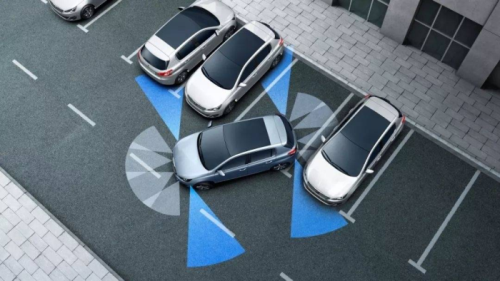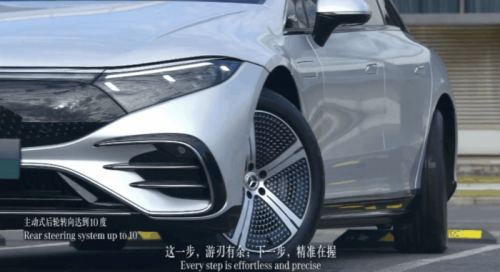
In the “second half” of the rapid development of vehicle intelligence, software’s swift decoupling from hardware brings itself more prominent value and significance. The automobile has been gradually transforming from a highly mechatronics terminal into an intelligent, extensible, and sustainably iterative upgrading mobile electronic one. Meanwhile, the industrial value chain is continuously shifting from one-off hardware package sales to premiums of software and service such as continuous hardware upgrade and subscription services. According to McKinsey, software is expected to account for 30% of the total vehicle value of D-class cars by 2030, that is, software updates are going to offer the automobile industry a new profit model.
OEMs are conceiving the idea of increasing their profitability through paid software subscriptions.

A new profit pool?
Tesla is the pathfinder in paid subscription. In China, the current pricing of subscribing the Enhanced Autopilot(EAP) is 32,000 yuan, and the Full Self-Driving(FSD) costs as high as 64,000. Paid subscriptions have paid off handsomely for Tesla, whose Q3, 2021 earnings report shows that software services, including FSD, generated 894 million dollars in revenue. Minsheng Securities(a Beijing, China-based investment bank) predicts that Tesla is going to enjoy more than 18 million existing car owners in 2030, and the gross profit earned with its FSD subscription service is expected to reach $13 billion.
Recently, the CEO of Volkswagen’s EV software arm CARIAD, Dirk Hilgenberg publicly stated that Volkswagen would launch a pay-as-you-go model as well as a subscription option for autonomous driving assistance function, “There’s a new business model already out there — a subscription model, or function-on-demand — where the AI will tell you, you can drive autonomously if you want, for the next 50 miles.” By a foreign media report, General Motors believes that by 2030, its annual revenue from software and subscription services is expected to reach $25 billion.
Among the vehicle start ups in China, NIO prices its automatic driving assistance system NIO Pilot at 15,000 yuan and 39,000 yuan, and the company once said that NIO Pilot contributes about 8,000 yuan in gross profit for one single car. Besides, paid subscriptions for XPILOT3.0, XPeng’s ADAS, brought 80 million yuan of revenue in the first quarter of 2021 (50 million yuan of which was deferred revenue), accounting for 2.5 percent of Xpeng’s total revenue in that quarter.
Apart from paying for software, some automakers are also introducing paid subscription to the hardware field. Mercedes-Benz launched a paid subscription service for rear-wheel-steer capability, which increases the active rear wheel steering angle of EQS 450+ Pinnacle Sedan from 4.5 degrees to 10 degrees, reducing the car’s turning diameter to 10.9 meters. In China, the subscription costs 4,998 yuan per year (while it charges 489 euros per year overseas, about 3,740 yuan). At the same time, BMW launched a series of subscription services in the South Korean market, such as heated seats, heated steering wheel, headlight brightness adjustment, acoustic simulation and wireless CarPlay, etc. A monthly subscription to heat BMW’s front seats costs $18 (about 121 yuan), with options to subscribe for one year $176 (1,184 yuan), three years $283 (1,900 yuan), or pay for “unlimited” access for $406 (2,732 yuan).

Consumers Won’t Pay for It?
Paid subscription for added hardware functions presented by these brands is on the top of preinstalled hardware, that is, customers are given the pre-existing service like “heated seats” as soon as they purchase, but have to pay additionally to unlock this feature, which is similar to the “advance on-demand” service on some video streaming platforms, where consumers have got a VIP identity, but they still need to pay again for access to the finale of TV plays in advance.
Unsurprisingly, enormous consumers have complained vociferously about the premium subscription for hardware provided by brands like Mercedes-Benz and BMW, which has been a trending topic on medias. The complaints include comments like “Why do I need to pay an annual fee after car purchase?”, “Need I pay for unlocking brake in the near future?”, “It’s time for a cracked version” ..., reflecting consumer dissatisfaction with the practice.
Paid subscription for software is implemented by a functional subscription mode. Consumers can enjoy new services and values that are constantly updated through subsequent optimization and upgrading if they pay extra money accordingly. However, it seems that consumers show a little interest in this kind of subscription.
It was pointed out in Tesla’s 2021 Q4 earnings report and conference call that only 1% to 2% of Chinese car owners paid for FSD. In February, Tesla announced it would confirm $962 million in deferred revenue related to FSD in 2022 (much lower than its previous estimate of $1.39 billion).
In the third quarter of 2021, nearly 22% Xpeng P7 owners paid for its XPILOT 3.0. This May, XPeng officially announced that some versions of ADAS software and upgrade service of P5 and P7, its two flagship models, will be adjusted as standard configuration and with no separate charge. According to the announcement, this decision is for the sake of popularizing more advanced and intelligent functions of their ADAS to more users.
According to a survey conducted by an overseas organization, 44% of car buyers would rather pay in lump-sum in advance to buy a new car with intelligent functions, eighteen percent of the customers prefer subscription, and the rest are unsure of their preference. There are two main reasons why paid subscription didn’t win customer’s heart. For one thing, in the current market, customers haven’t developed a habit of paying for subscription, of which, as a sales behavior, consumers’ acceptance is still low. For another thing, because of the relatively high cost, consumers are skeptical about the necessity for certain features.
As is shown in a report released by Deloitte, consumers around the world show little willingness to pay for advanced technologies loaded on their cars. And in China, the maximum amount consumers can pay for the technologies is 2,500 yuan. For now, the paid subscription model is controversial, but under the industry consensus of the idea “software defines cars”, leading car companies and start ups have been actively exploring new business models for subscription services. How will it go? Let the bullets fly a bit longer.

 Room 1104,Block B,JingBan Building,6 Middle Beisanhuan Road,Xicheng District,Beijing
Room 1104,Block B,JingBan Building,6 Middle Beisanhuan Road,Xicheng District,Beijing
 (8610)62383600
(8610)62383600
 quanqixiang@carresearch.cn
quanqixiang@carresearch.cn
 京公网安备:11010202007638号|京ICP备17032593号-2|Report illegal and bad information:010-65993545-8019 jubao@carresearch.com
京公网安备:11010202007638号|京ICP备17032593号-2|Report illegal and bad information:010-65993545-8019 jubao@carresearch.com
Legal support:Beijing Yingke Law Firm|All rights reserved, DO NOT reproduce without permission